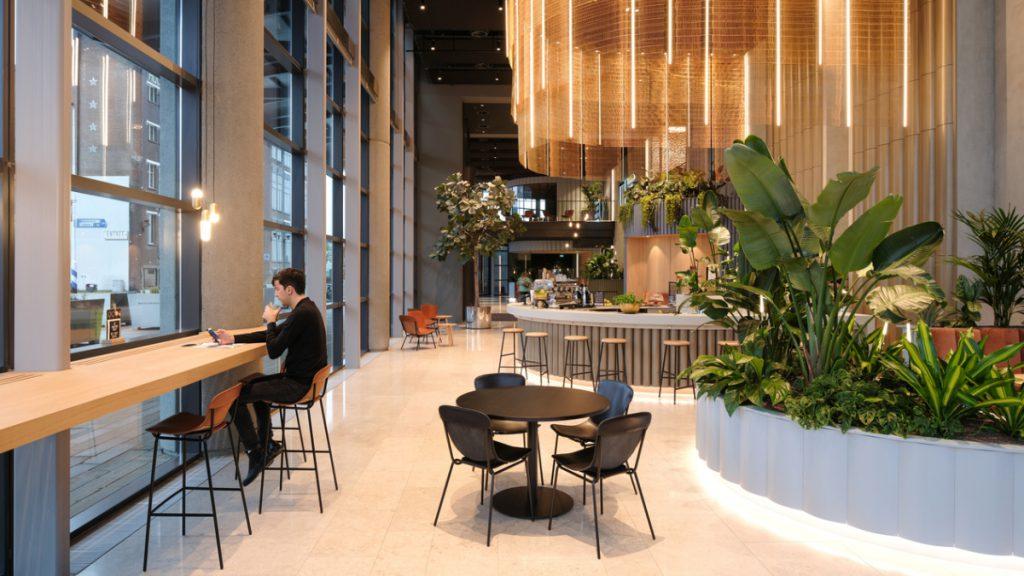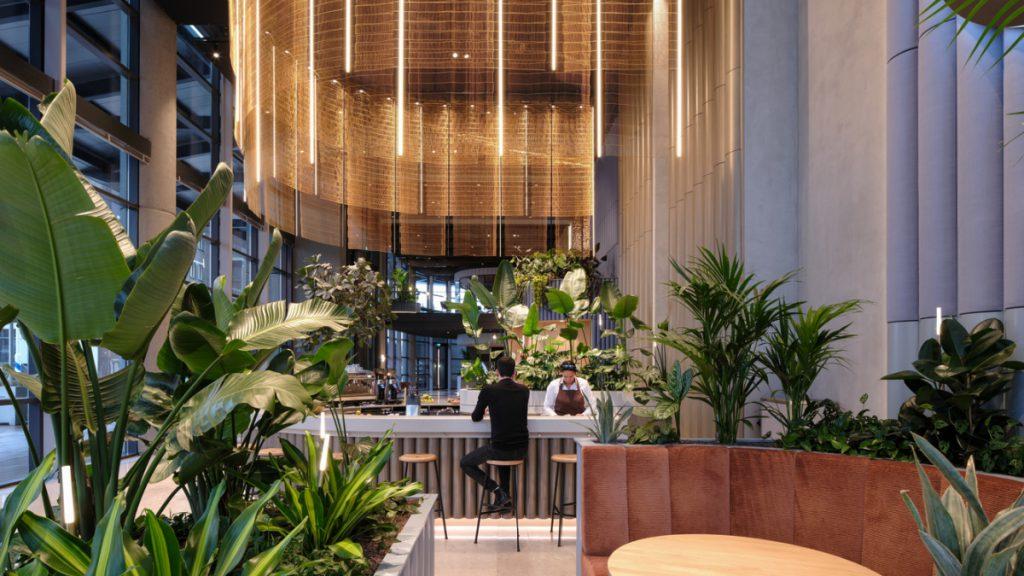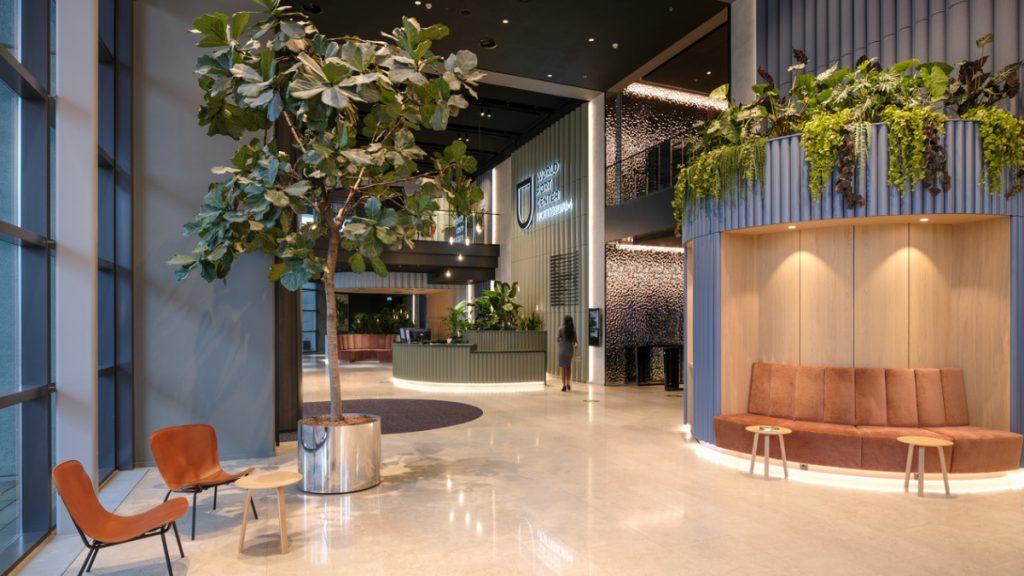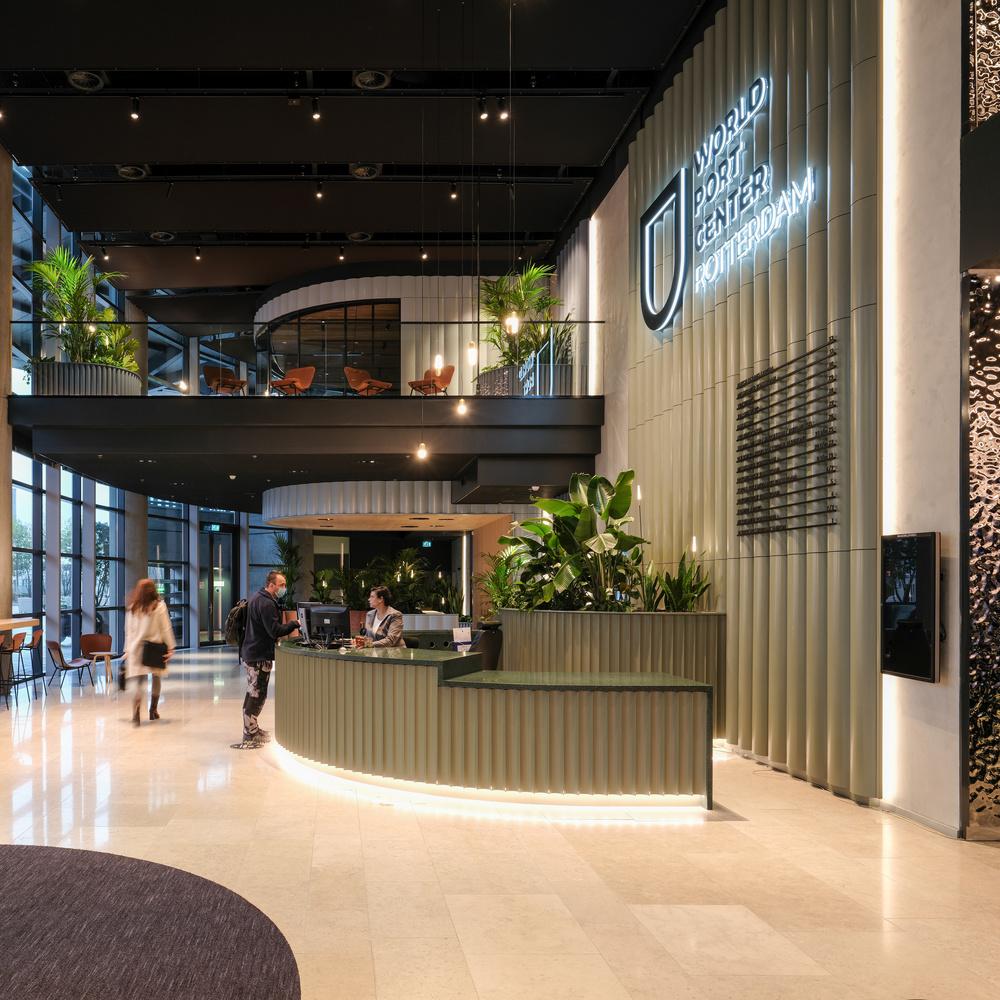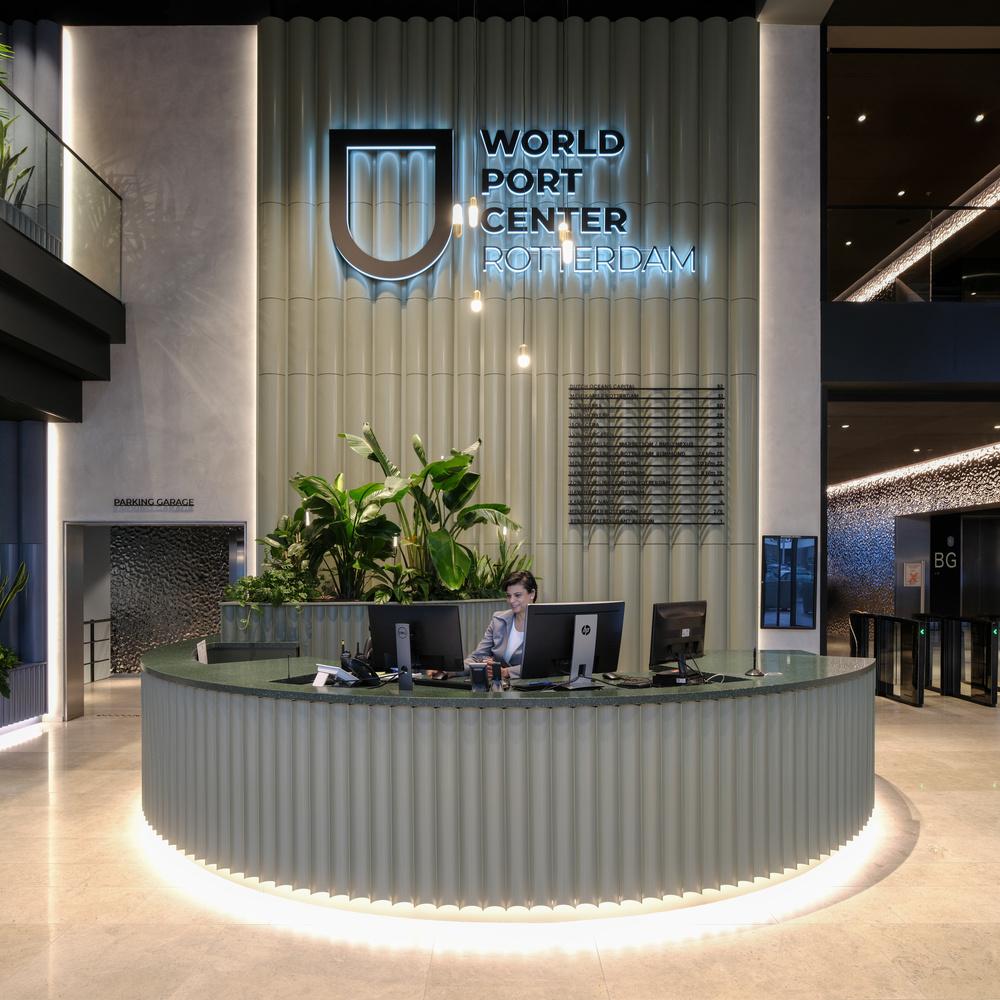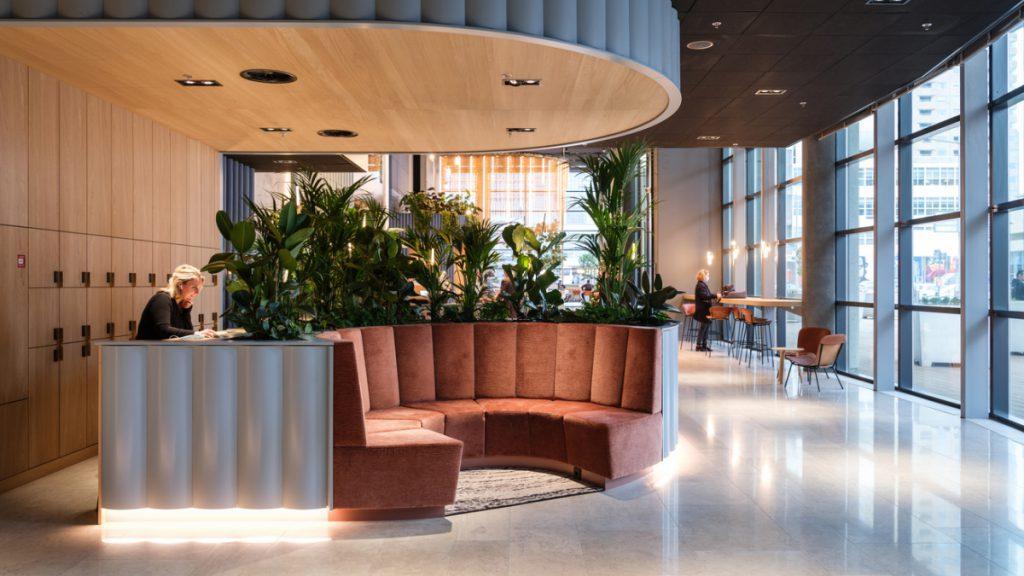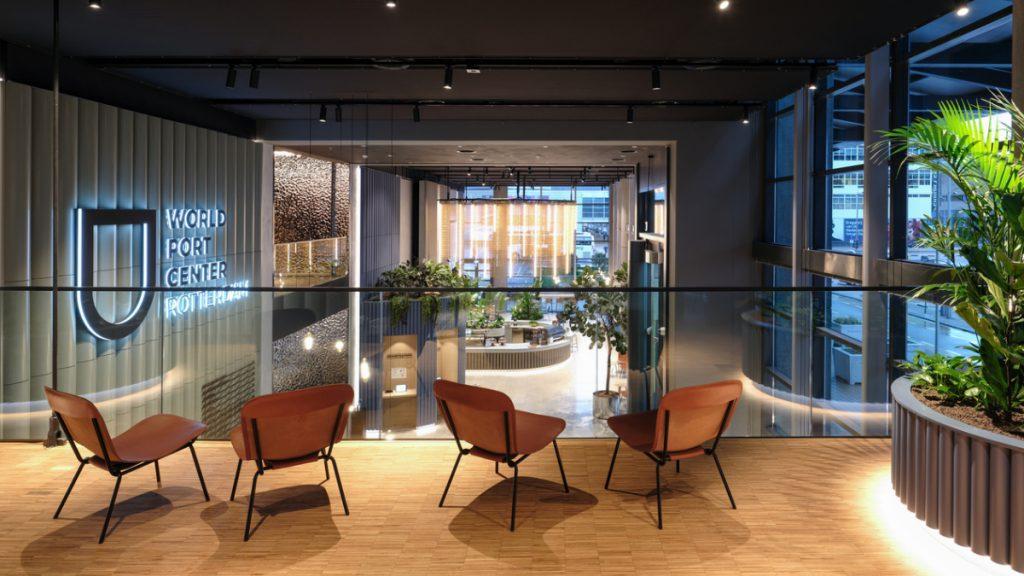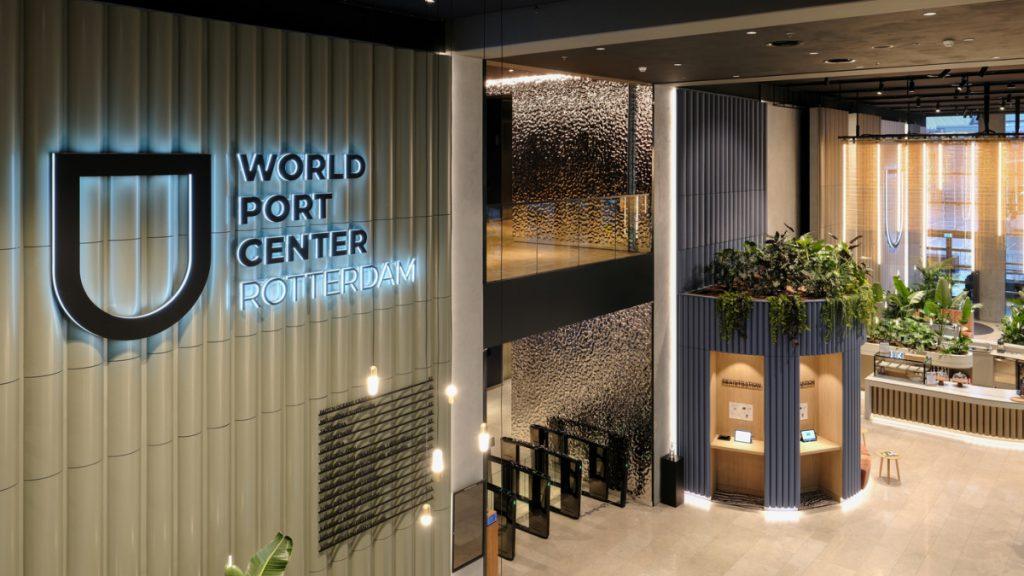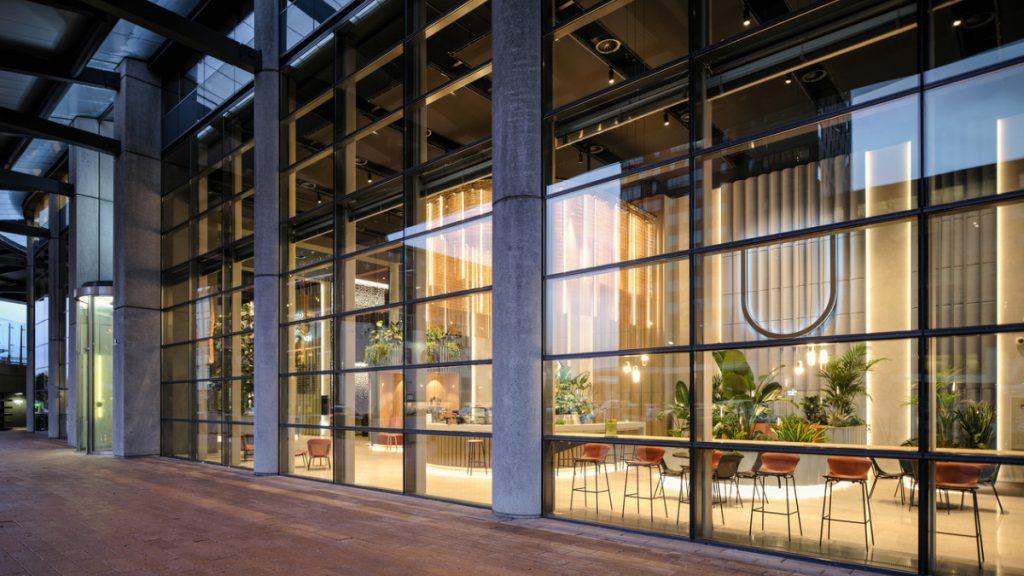A breath of fresh air in Rotterdam
Europe’s largest port is seeing an innovation boom that is expected to drive the entire Dutch energy transition. As part of the post-pandemic recovery, the iconic World Port Center has been sustainably renovated.
The Port of Rotterdam is the largest port in Europe; worldwide, larger quantities of containers are only handled in nine Asian facilities. The consequences of the COVID-19 pandemic also seem to be over: a new record was even set last year, with 15.3 million TEU (twenty-foot equivalent units) containers handled (a total of 468.7 million tonnes). CEO Allard Castelein was able to announce dividends of €122.6 million to the city of Rotterdam and the Dutch state in February.
Investing in the energy transition
The port, which has been used and steadily expanded since the early 14th century, can today be accessed by ships with a draught of up to 24 metres. For Allard Castelein, the return to business as usual means a mission to sail boldly into the future: “In terms of throughput volumes, the port is back to its pre-pandemic level. We are now investing in the construction of additional terminal capacity to further facilitate the container sector.”
But above all, now is the right time to invest in new energies: “We expect to see decisions for various energy transition projects this year. Altogether, the ongoing projects of the companies in the Rotterdam port area could account for 35 percent of the Dutch CO2 reduction by 2030.”
World Port Center – prestigious building and landmark
The 123m-high World Port Center, the country’s ninth highest building, is also being swept up by the spirit of optimism in the Netherlands’ second largest city. The iconic Rotterdam landmark was originally designed by Sir Norman Foster and opened in 2001 as a prestigious building and part of the urban renewal programme Kop van Zuid.
From its prominent position at the western tip of Wilhelmina Pier, the 32-storey, semi-circular office tower overlooks not only the surrounding port but the whole of Rotterdam. But for quite some time the entrance area especially was no longer fit for purpose. Architectural firm Mecanoo was therefore commissioned to modernize the ground floor and parts of the first floor. The aim: good accessibility and improved links to the outside, increased social interaction and a generally inviting street level.
Activity-oriented space
It is no coincidence that Mecanoo was chosen to handle the renovation: the Dutch company, which among other things planned the Natural History Museum in Abu Dhabi and the Martin Luther King Jr. Memorial Library in Washington DC, was already responsible for the neighbouring “Montevideo”. The residential building, which opened in 2005, is ten metres taller than the World Port Center (including the M symbol on the roof, which is used as a weathervane, it is even almost 30m taller) and is the third tallest building in the Netherlands.
Mecanoo wanted to create over 1,550 square metres of “coherent, activity-based space with a clear identity” from a user-oriented perspective. Its concept centres on a large number of variably usable spaces for different formal and informal activities – in addition to an inviting lounge area with a friendly, semi-circular reception desk, various meeting rooms, a bar and event spaces were added last year.
Identity-defining design
Mecanoo’s plans use the space along the façade to provide seating with a view. They also place all relevant facilities close to the core of the building – with improved lines of sight and connections between the inside and the outside. Identity-defining design elements such as the backlit World Port Center Rotterdam logo and the airy curtain above the bar are visible from the outside.
Various groups of seats distributed throughout the lobby, where there is also a newly designed area for lockers and a new exit to the garage, aim to improve communication between office staff and visitors. At the same time, the new arrangement of these meeting spaces allows for more daylight.
More greenery at the port
A new spiral staircase connects the lobby with the first floor and offers a picturesque view of the water. A popular, spacious terrace sloping down to the Nieuwe Maas extends the restaurant and offers plenty of space for events, from lectures to parties.
Each project corresponds to the needs of the users, the physical context, the climate and the culture.
Mecanoo
The building’s design places particular emphasis on greenery in the lobby: various types of plants in different containers, free-standing or integrated into the design, bring nature inside the port building and create a fresh atmosphere. “This indoor and outdoor greenery enhances biodiversity and also improves acoustics.”
Design that touches all the senses
Mecanoo was founded in 1984 in the Dutch city of Delft and today is made up of a multidisciplinary team of experts – including architects, interior designers, urban planners, landscape architects and architectural technicians – from more than 25 countries. The philosophy is based on four pillars, summarized as: People, Place, Purpose, Poetry: “Each project corresponds to the needs of the users, the physical context, the climate and the culture. And the current and projected potential of a building’s function to create design that touches all the senses.”
Sustainability, according to Mecanoo, “is an inherent aspect of our design approach, feeding into an ambition to create new identity in a world of globalization, resulting in inspiring and authentic places, socially relevant for people and communities. We build spaces that are relevant to their location and create connections that give a building meaning.”
Thermal and visual comfort
The vision for the World Port Center Rotterdam is a safe, inclusive and comfortable environment for healthy working. As the focus is on the well-being of all users of the high-rise, which offers a total of 35,500 square metres of office space, the owners – an international joint venture of Unifore and Marathon Asset Management – are hoping to achieve a WELL certification. This rating system covers, among other things, indoor air quality, water quality, room and building acoustics as well as the thermal and visual comfort of the interior spaces.
The latter is to be achieved through natural, sound-absorbing materials. To promote sustainable well-being, more water dispensers have been installed in the renovated areas to encourage water drinking while minimizing the use of plastic bottles.
Conserving resources
In addition, the team sought to conserve resources throughout the renovation work: “We reused many of the existing interior elements and finishes, such as the ceiling, flooring, the ventilation for fresh air and convectors for heating the space.” Certified wood and other low-maintenance materials were also used which can themselves be reused.
In the lobby, where the lifts are located, cladding made of hammered metal panels with a water ripple effect creates a direct architectural connection with the surrounding port. But the best way to admire this is to step outside the door and put your nose in the wind that blows there. And breathe in the scent of the big, wide world.
Text: Hannes Kropik
Photos: Mecanoo
